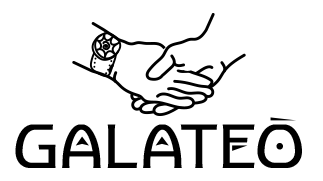

 | Object type: Relief |
| Museum: AO 20185, RMN-Grand Palais, Musée du Louvre | |
| Findspot: Unknown | |
| Culture, period: Neo-Assyrian | |
| Production date: 680-669 BCE | |
| Material: Bronze | |
 | Dimension: |
 | Nonverbal Communication: Touching the nose, Erect posture |
Description:
The queen Naqi’a, wife of Sennacherib and mother of Esarhaddon, whose identity is inscribed on the gown of the figure, is involved in a ritual with the king. It is unanimously acknowledged that both the queen and the king, who is presumably Esarhaddon, are involved in “mouth-washing” (mīs pî) and “mouth-opening” (pīt pî) rituals, since the text inscribed on the relief describes this ritual.
The left hand is occupied by an object – a mirror for the queen, a scepter for the king – while the right hand performs the well-known appa labānu “to stroke the nose”, gesture. The object they hold seems to be the libbi gišimarri (“palm shoot”), a cult/cleansing instrument, which is also attested in other iconographic and textual evidence. In fact, the use of the date-palm heart (libbi gišimarri) and the heart of a wood (libbi iṣṣi) is often attested in the ritual mîs pî, which is the ritual performed by the queen and king in the bronze relief. The former, in particular, is mentioned on a list of aromatic woods used during the ritual, while the second, translated by the editors also as “date-palm heart”, is encountered in the following sentence: “date-palm-“heart”…he/you lay down and raises his hand”. The movement of the hand which holds the libbi iṣṣi described in the text might recall the ritual action performed by the queen and the king, thus making them active participants and performers of the ritual.
The queen and king are similarly represented, insofar as both possess an erect posture and a direct gaze. Also, it might be reasonable to suspect that the queen and king are standing side by side. In fact, Assyrian sculptors were particularly keen to manage the space between figures and individuals standing side by side were usually represented with their feet overlapping, so as to express their spatial location. A hypothetical reconstruction of the missing lower part of the bronze relief, based on Esarhaddon’s stele from Sam’al, suggests that the queen and king’s feet do not overlap, so they were presumably set in single file.
Bibliographic references:
Parrot A. – Nougayrol J. 1956, “Asarhaddon et Naqi’a sur un bronze du Louvre (AO 20. 185)”, Syria33, 147-160. (study)
Melville S.C. 1999, The Role of Naqia/Zakutu in Sargonid Politics (State Archives of Assyria Studies 9), Helsinki, 49-52 (study)
Macgregor S.L. 2012, Beyond Hearth and Home: Women in the Public Sphere in Neo-Assyrian Society (State Archives of Assyria Studies 21), Helsinki, 109-117 (study)
Svärd S. 2015: Women and Power in the Neo-Assyrian Palaces (State Archives of Assyria Studies 23), Helsinki, 75–77 (study)
Portuese L. 2022: “A Gender-Centered Perspective on Manners and Etiquette for Understanding the Historical Role of the Assyrian Queen”, KASKAL Rivista di storia, ambienti e culture del Vicino Oriente Antico 19, 52-56 (study)
© Image credits: Musée du Louvre / Franck Raux; Reconstruction (Portuese Ludovico)
